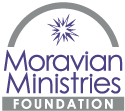
Last month we began a new “Spotlight on Stewardship” series as part of our regular communications. The series offers best practices for a holistic and sustainable stewardship ministry, as well as shares “stewardship success stories” from Moravian churches, emerging ministries, agencies, and more in North America.
What story does your budget tell?
Once upon a time, there was a church that loved to serve. Each year members gave of their time and talent to provide meals to others, to tutor children from the neighborhood elementary school, to pick up litter from a nearby park, and much more. If you asked someone from this congregation what his or her church was all about, they’d tell you, “Mission with a capital M!”
The church’s budget, on the other hand, told a different story. The church buildings, many of which weren’t used during the week, cost a lot of money to maintain. The church had a large loan payment and a high mortgage payment. While a portion of salaries and other line items could be allocated to mission since the pastor participated in those activities, the church had had to cut back on staff so that now the pastor was spending more of his time on administrative tasks and maintenance needs, including mowing and snow removal. Not quite the mission work he or his congregation had in mind! The $150,000 church budget had $500 allocated to mission.
Clearly the congregation’s stewardship accomplished a lot of mission as they gave generously of their time and talent to so many outreach activities and programs. Yet year after year the amount of treasure given decreased, and the church leaders had no choice but to make cuts to the budget. One obvious place to do that was mission; over the last ten years, the church had gone from allocating $5,000 to mission to $500.
What can you do?
Is your church in a similar situation? If so, here are three suggestions that may help as you encourage people to grow in their financial stewardship:
- Look at the church budget with fresh eyes. What story does it tell? Does that story line up with the church’s mission and vision? If it doesn’t, make a plan for how to communicate that to the congregation. Many churches utilize a narrative budget to make the connection between money and ministry clearer; the Center for Faith and Giving has a great narrative budget resource available here.
- Look at the church facilities with fresh eyes. Do you have buildings or spaces that sit empty most of the week? Can those be used for supplemental income, for mission, or for both? In the Southern Province, Calvary and Peace have both reimagined the use of their space; click here to view their presentation, “Church in the Neighborhood: A New Twist on Congregational Outreach”.
- Look at your stewardship practices with fresh eyes. Does the majority of what the church does and says about stewardship focus on money and “making budget”? If so, change that. A church trustee once said, “I love numbers, but numbers don’t change me. Stories change me.” Tell your budget’s story by showing its impact: how it is helping or even transforming people in the name of Christ. Share your church’s stewardship stories by focusing on how gifts of time, talent, treasure, and testimony are accomplishing God’s work in the world through your congregation.
What story does your budget tell? I’d love to hear it. If you’d like to learn more about a narrative budget, stewardship of facilities, or MMFA’s stewardship services and how we can serve you, please give me a call.






